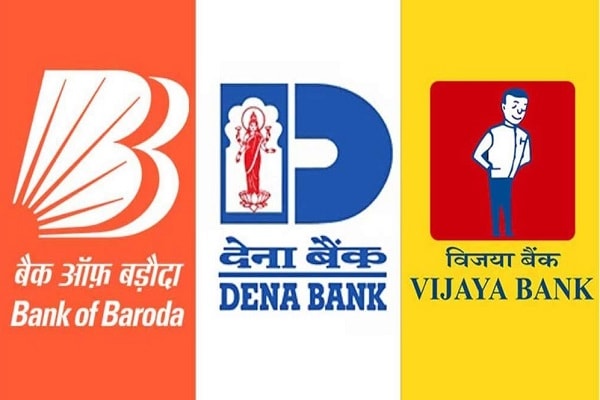The Amalgamation of Vijaya Bank and Dena Bank with Bank of Baroda Scheme, 2019 dated January 2, 2019, issued by the Government of India was published under Extraordinary Part II-Section 3-Sub-section (i) in the Gazette of India sanctioning the Amalgamation of Vijaya Bank and Dena Bank with Bank of Baroda in terms of section 9 of the Banking Companies (Acquisition and Transfer of Undertakings) Act, 1970 (5 of 1970) and section 9 of the Banking Companies (Acquisition and Transfer of Undertakings) Act, 1980 (40 of 1980). The scheme comes into force on the 1st day of April 2019.
Consequently, all branches of Vijaya Bank and Dena Bank will function as branches of Bank of Baroda from April 1, 2019. Customers, including depositors of Vijaya Bank and Dena Bank will be treated as customers of Bank of Baroda with effect from April 1, 2019. (Press Release: 2018-2019/2329 of RBI)
Background:
The Union Cabinet chaired by Prime Minister Shri Narendra Modi has approved the scheme of amalgamation for amalgamating Bank of Baroda, Vijaya Bank and Dena Bank, with Bank of Baroda as the transferee bank and Vijaya Bank and Dena Bank as transferor banks.
The amalgamation will help create a strong globally competitive bank with economies of scale and enable realisation of wide-ranging synergies. Leveraging of networks, low-cost deposits and subsidiaries of the three banks has the potential of yielding significant synergies for positioning the consolidated entity for substantial rise in customer base, market reach, operational efficiency, wider bouquet of products and services, and improved access for customers.
(Also read: Approach to Banking Ombudsman if the bank is not resolving your complaint)
Key points of the Scheme of amalgamation:
(a) Vijaya Bank and Dena Bank are transferor banks and BoB is transferee bank.
(b) The scheme shall come into force on 1.4.2019.
(c) Upon commencement of the scheme, the undertakings of the transferor banks as a going concern shall be transferred to and shall vest in the transferee bank, including, inter alia, all business, assets, rights, titles, claims, licenses, approvals and other privileges and all property, all borrowings, liabilities and obligations.
(d) Every permanent and regular officer or employee of the transferor banks shall become an officer or employee and shall hold his office or service therein in the transferee bank such that the pay and allowance offered to the employees/officers of transferor banks shall not be less favourable as compared to what they would have drawn in the respective transferor bank.
(e) The Board of the transferee bank shall ensure that the interests of all transferring employees and officers of the transferor bank are protected.
(f) The transferee bank shall issue shares to the shareholders of transferor banks as per share exchange ratio. Shareholders of the transferee bank and transferor banks shall be entitled to raise their grievances, if any, in relation to the share exchange ratio, through an expert committee.
Some of the strengths of the envisaged amalgamated entity are:
- The amalgamated bank will be better equipped in the changing environment to meet the credit needs of a growing economy, absorb shocks and capacity to raise resources. Economies of scale and wider scope would position it for improved profitability, wider product offerings, and adoption of technology and best practices across amalgamating entities for cost efficiency and improved risk management, and financial inclusion through wider reach.
- It would also enable creation of a bank with scale comparable to global banks and capable of competing effectively in India and globally.
- Strengths of individual banks - such as Dena Bank's relatively higher access to low-cost CASA deposits, Vijaya Bank's profitability and availability of capital for growth, and the extensive and global network and offerings of BoB will translate into advantages in terms of market reach, operational efficiencies and the ability to support a wider offering of product and services.
- The amalgamated banks will have access to a wider talent pool, and a large database that may be leveraged through analytics for competitive advantage in a rapidly digitalising banking context. Benefits would also flow as a result of wider reach and distribution network and reduction in distribution costs for the products and services through subsidiaries.
- Public at large shall benefit in terms of enhanced access to banking services through a stronger network, the ability to support a wider offering of product and services, and easy access to credit.
(Also read: RBI imposes monetary penalty on Punjab National Bank and 36 other Banks)
(Also read: How to protect yourself from Digital Frauds)
(Also read: Now know about the Vacant Berths available in the train AFTER chart preparation)
(Also read: Single Emergency Helpline Number 112 launched in India)
Disclaimer: The above post includes some content used from RBI website and executed on this website for fair use only. As this website is of educational nature, hence the content is used for education and awareness to the public.

